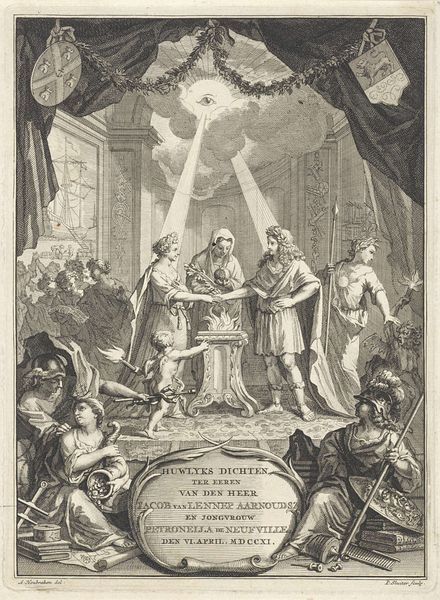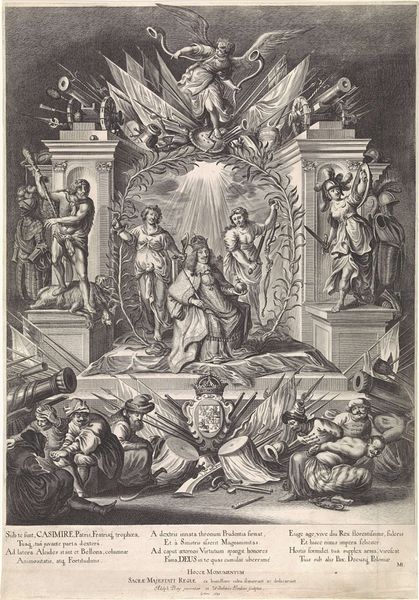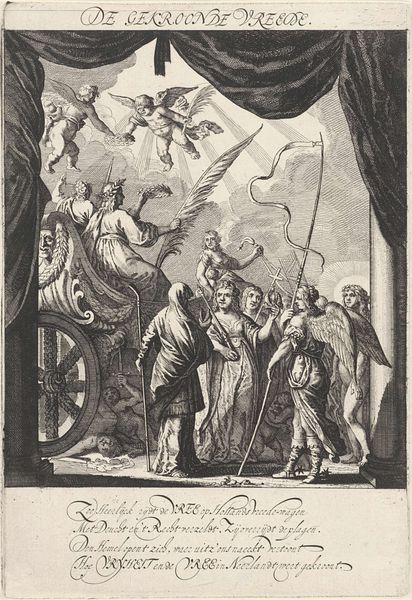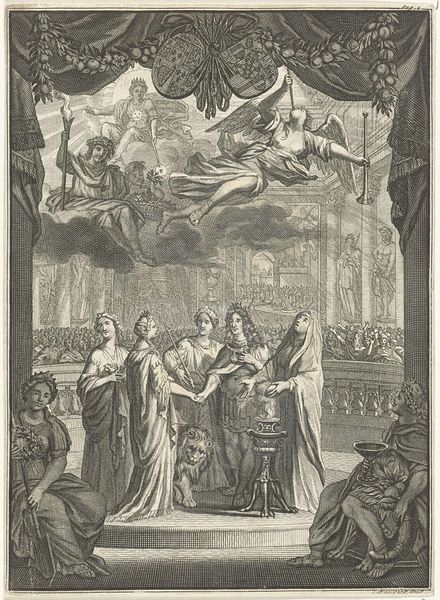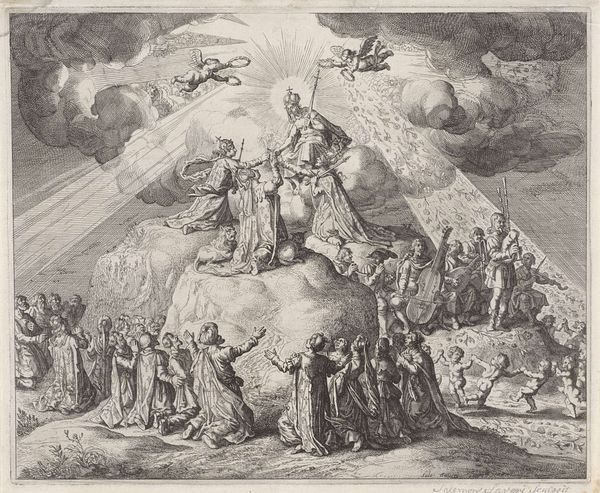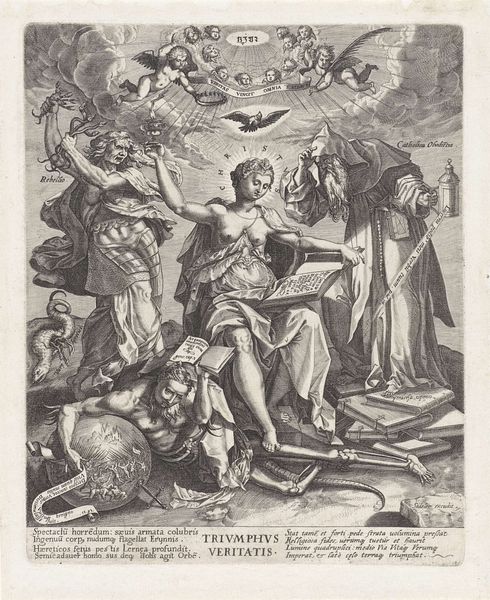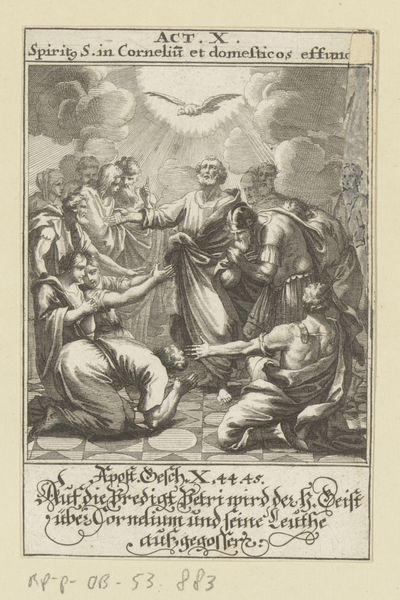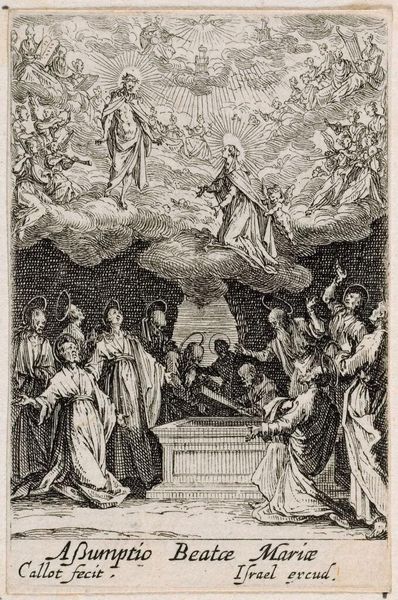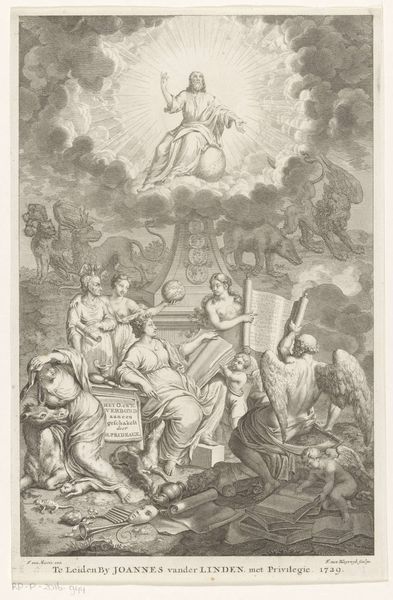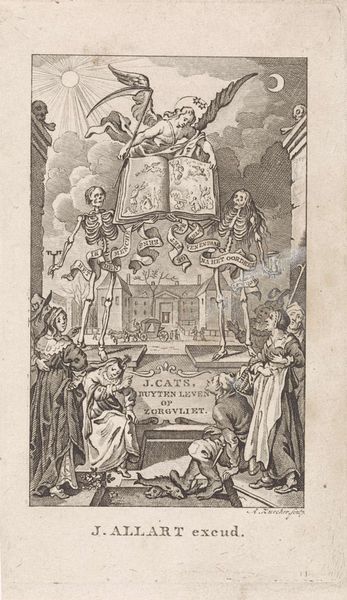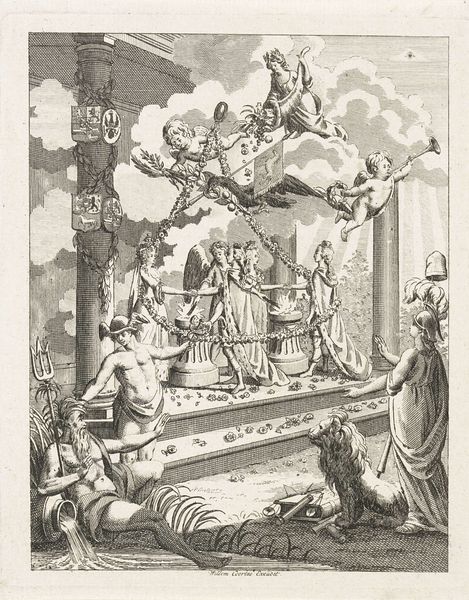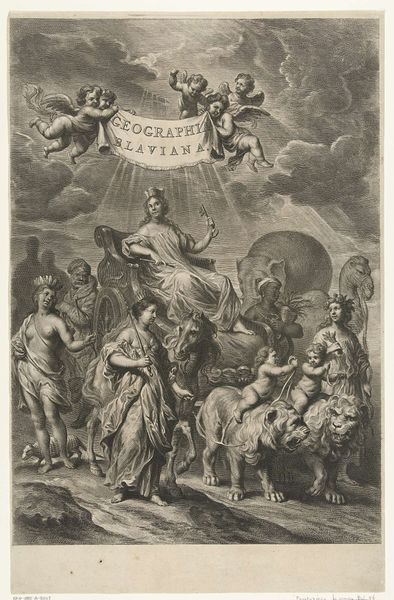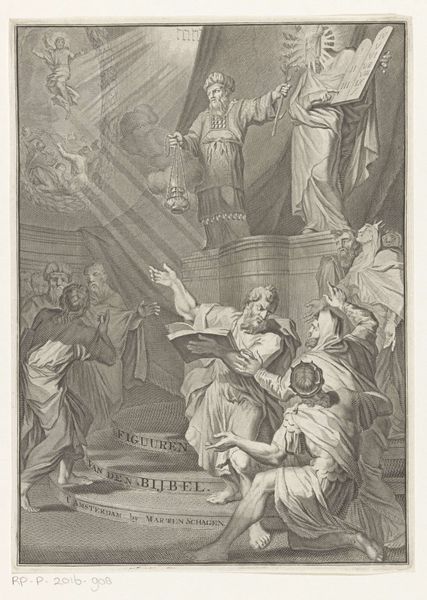
print, engraving
#
baroque
#
symbol
# print
#
old engraving style
#
history-painting
#
engraving
Dimensions: height 267 mm, width 185 mm
Copyright: Rijks Museum: Open Domain
Editor: Here we have Salomon Savery's "Vertoning van het Verbond der Vorsten," created as a print in 1649, housed at the Rijksmuseum. It’s an engraving filled with figures, seemingly during some sort of ritual or agreement. It’s quite detailed for such a small scale; how would you approach an interpretation of this print? Curator: I am interested in its production and dissemination. Prints such as these had less to do with ‘art’ in the traditional sense and more to do with propaganda and distribution. The method of engraving allowed for reproduction on a large scale, think about who commissioned this image and why. Who did it seek to influence, and how did the materials contribute to the social project in question? Editor: So, instead of focusing on the artistry, we should look at how it was used as a tool? The figures are clearly allegorical, I guess, designed to convey a specific message efficiently and widely. Curator: Exactly! Consider the labour involved in its creation, the workshop practices of the time, the networks involved in its distribution. Think about the paper itself: where did it come from, and who had access to it? Also the ways in which consuming visual culture in print changed audiences at the time? Did it contribute to shaping public opinion? Editor: I see! The baroque style with those exaggerated gestures would appeal to a broader audience perhaps? Was the text part of this dissemination? Curator: Precisely! The visual language and the accompanying text worked together to create a powerful and easily replicable message. Editor: So, the "art" here lies less in the individual skill and more in the overall impact on contemporary society, driven by its material form? I never thought of prints that way! Curator: Indeed, it allows us to consider the print not merely as a piece of aesthetic art, but as an element of political economy.
Comments
No comments
Be the first to comment and join the conversation on the ultimate creative platform.

